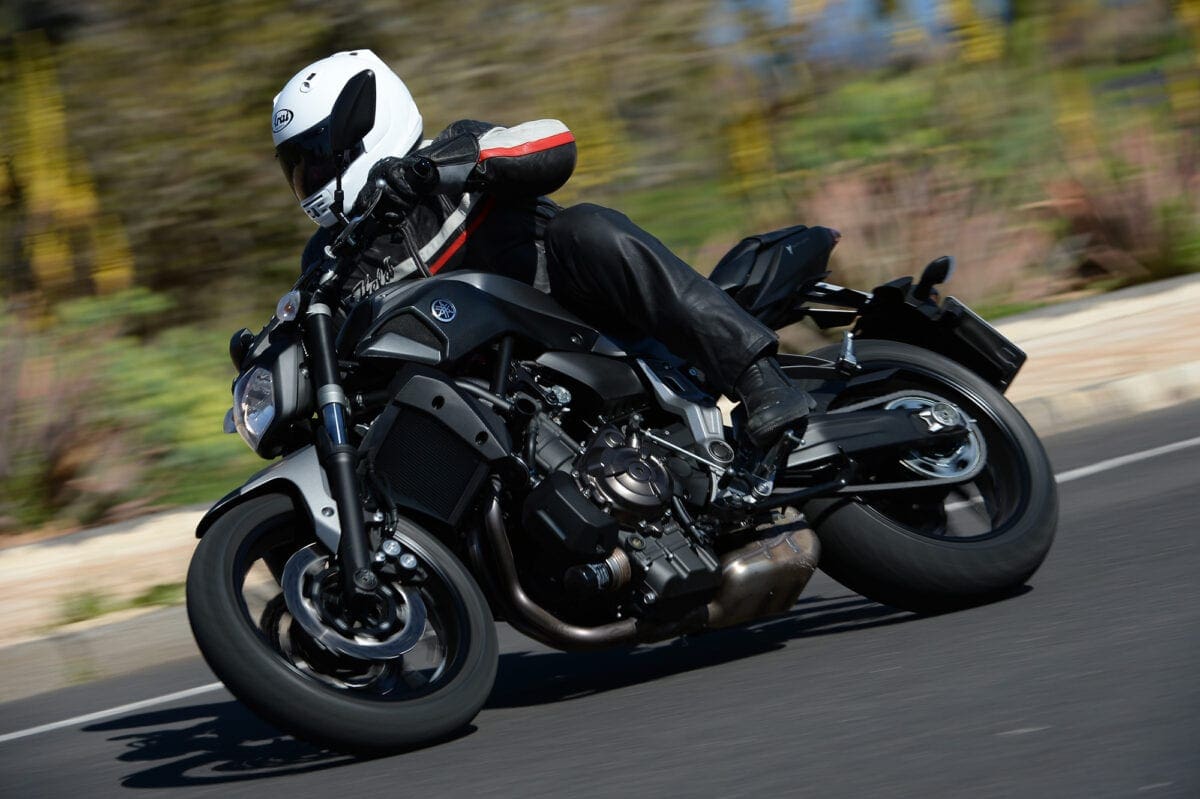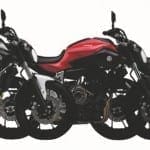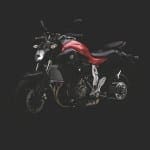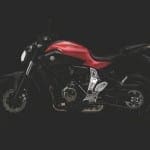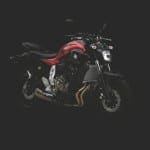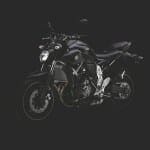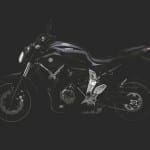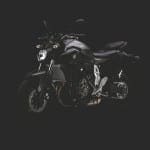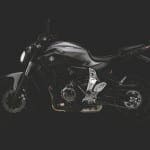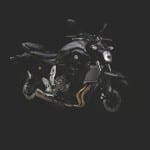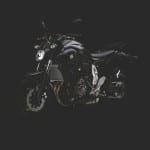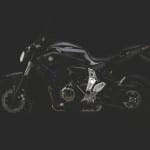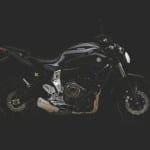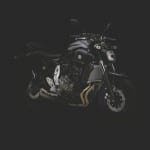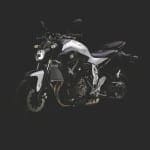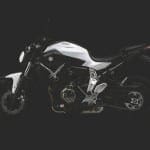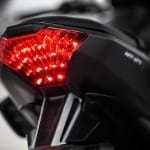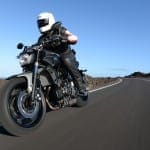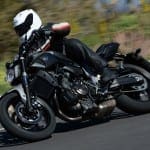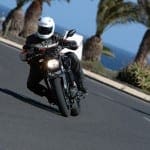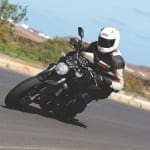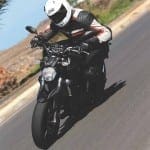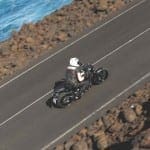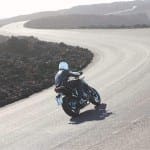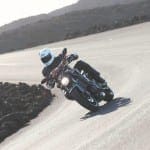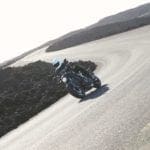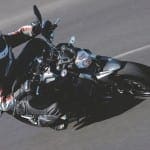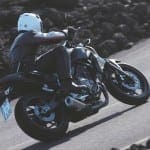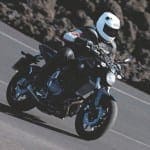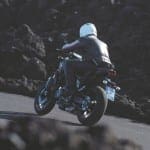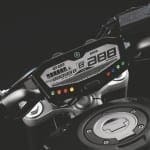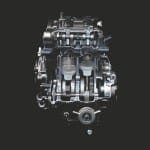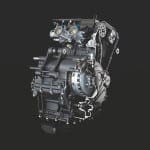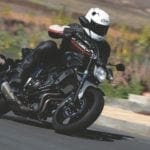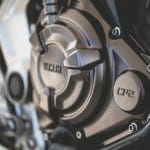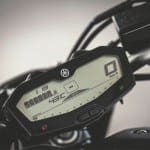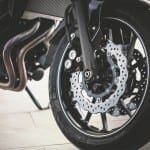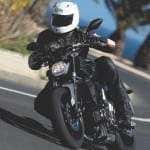£5199 | 74bhp@9000rpm | 50lb-ft@6500rpm | liquid-cooled parallel-twin
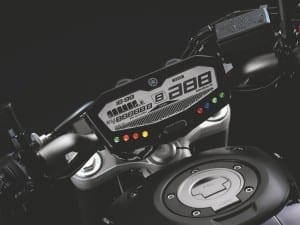 The MT-07 was designed with a very clear concept: big torque in an agile chassis; easy to ride by anyone; and very affordable. A machine that was adored by all of us on the World launch in Lanzarote, it could well be one of the most important bikes released this year. Why? Yamaha aimed to create something that would appeal to new and existing riders, whether they’re commuters, weekend sports fans or tourers. That’s potentially a big market, and if you ask me, they’ve done it, and then some…
The MT-07 was designed with a very clear concept: big torque in an agile chassis; easy to ride by anyone; and very affordable. A machine that was adored by all of us on the World launch in Lanzarote, it could well be one of the most important bikes released this year. Why? Yamaha aimed to create something that would appeal to new and existing riders, whether they’re commuters, weekend sports fans or tourers. That’s potentially a big market, and if you ask me, they’ve done it, and then some…
Tell me about the engine
The MT-07 (Master Torque, in case you’re wondering) carries an all-new motor. The parallel twin layout has a 270° crank, which gives an uneven firing order for strong acceleration, good traction, and an almost V-twin character.
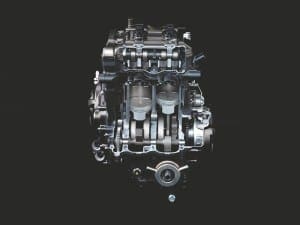 Besides the torque advantage of a twin, it’s also a compact layout that saves weight, and with less moving parts it reduces friction and increases economy. Compared to Yamaha’s 600cc 4-cylinder XJ6, which returns a claimed 53.6mpg, the 68.4mpg of the MT-07 should give you a range of up to 208 miles from its 14 litre tank: the XJ6 would run dry four miles earlier, using 3 litres more fuel.
Besides the torque advantage of a twin, it’s also a compact layout that saves weight, and with less moving parts it reduces friction and increases economy. Compared to Yamaha’s 600cc 4-cylinder XJ6, which returns a claimed 53.6mpg, the 68.4mpg of the MT-07 should give you a range of up to 208 miles from its 14 litre tank: the XJ6 would run dry four miles earlier, using 3 litres more fuel.
An automatic decompressor means a smaller starter motor can spin up the engine, which results in a slimmer battery for even more weight saving. This ‘CP2’ lump also carries what Yamaha say is the smallest clutch ever fitted to a motor of its power.
The standard exhaust is one-piece, from downpipes to end-can, and through its need to comply with current and future emission laws is quite subdued in sound. The optional road-legal Akrapovič system has stainless-steel downpipes and chamber (with a drop-in cartridge-style catalytic converter), and separate titanium end-can.
Like the XJ6, the frame is a tubular steel backbone design, but this more sophisticated version is 6kg lighter with different grades of high-tensile steel throughout, to allow for tuned flex. The swingarm might look like alloy, but the asymmetric design is made up of varied thicknesses of pressed steel.
The wheels are the same beautiful lightweight castings used on the MT-09, carried by 41mm un-adjustable forks. A steering angle of 24° is the same as the current R1, a degree sharper than the MT-09, and two degrees sharper than the XJ6. This steep angle could make the bike ‘flappy’ over bumps, but by bringing the forks as close together as possible, it reduces the inertia as they rotate around the headstock, making the bike more stable.
The wheelbase, at 1400mm, is 15mm shorter than the R1, and 40mm shorter than the MT-09 and XJ6. However, a 180 section rear tyre is quite fat for a bike like this, and the combination works perfectly for fast, yet stable handling.
 The rear shock is adjustable for preload, running through a progressive link, and is horizontal to help lower the centre of gravity, which is 25mm below that of the XJ6.
The rear shock is adjustable for preload, running through a progressive link, and is horizontal to help lower the centre of gravity, which is 25mm below that of the XJ6.
The pair of four-piston monobloc front brake calipers are the same as used on the FZ8, with 282mm wavy discs. ABS is an optional extra – the same system as that used on the MT-09, it adds £400 and just 3kg.
Should I buy one?
An A2 licence-friendly 47bhp restricting kit will be available in March, so with its agile chassis and easy-to-ride nature, this would make an incredible first big-bike, with the kit removable when riders pass their A test. Don’t think of this as a beginner’s bike though. 74bhp might not sound like that much these days, but the 50lb-ft of torque put a big smile on everyone’s face at the launch.
Windblast generally keeps speeds below 100mph, and 110mph was the most we saw during the test, but that wasn’t flat-out. The MT-07 would be a lot of fun on a track, but it would of course be out-paced by the sportsbikes.
This is not a niche bike, and the list of 50 Yamaha accessories includes Gilles rear-sets and levers for sports riders, soft luggage, a 12V socket and heated grips for tourers, and a top-box and screen for commuters. Neat touches as standard include a small amount of storage under the pillion seat, and a full-featured dash with a gear indicator.
 It could be argued that the MT-07 will be the bike that is, in 30 years, looked back upon with the fondness of the RD350LC today, and we all wish we had a mint one of those in the garage…
It could be argued that the MT-07 will be the bike that is, in 30 years, looked back upon with the fondness of the RD350LC today, and we all wish we had a mint one of those in the garage…
So what’s it like to ride?
This bike is staggeringly good fun: it turns quickly and easily; it’s light; it’s stable and it’s fast enough for road and twisty track use. Oh, and if you’re feeling cheeky on track, it’s incredibly easy to wheelie, without being the kind of bike that keeps popping up when you least expect it.
Despite the engine’s twin cylinders and uneven firing order, it’s a smooth lump, with a very good throttle response. There’s none of the snatchiness associated with some big twins (particularly on early fuel injection systems), and the cast panels between the seat and footpegs are mounted on rubber dampers, isolating your feet from any vibrations in the frame.
Over the 130mile test route, we took in long fast highways and very twisty mountain roads, yet my bike delivered an average of 46.3mpg. With normal day-to-day commuting, you should easily see 50-60mpg.
The MT-07 always feels under complete control, inspiring huge confidence. In fast bends the bike can feel a little soft, and whilst shooting the cornering pictures on a very fast roundabout, it didn’t feel quite as accurate as some more sophisticated suspension set-ups. To criticize it at this price-point for having average suspension is unfair though, as it easily out-performs anything most of us road-riders will throw at it. At the World launch, not one bike was crashed, and that included some crazy riding that saw scraped number plates!
It might be a bike designed to help re-invigorate the 25-35 year-old market, but that shouldn’t put off older or more experienced riders. The MT-07 re-inspires the excitement of riding by being bloody good fun. And as a machine that costs a little over five grand and makes you feel 20 years younger, I want one!
Tested by: John Milbank Photos by: Henny Stern; Matteo Cavadini and Jonathan Godin
TECH SPEC
Price: £5199 (£5599 with ABS)
Engine: 689cc liquid-cooled inline twin, 4 valves
Power: 74bhp (55kW)@9000rpm
Torque: 50lb-ft (68Nm)@6500rpm
Curb weight: 179kg (182kg with ABS)
Seat height: 805mm
Tank size: 14 litres
[button link=”http://www.morebikes.co.uk/submit-your-bike-review/” type=”big” newwindow=”yes”] Send us YOUR bike review[/button]

